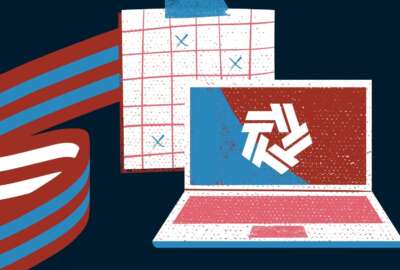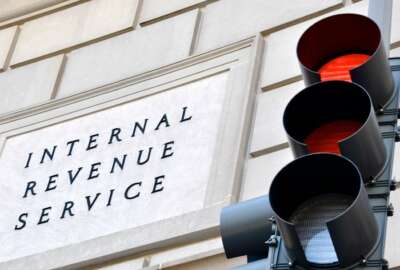I’ve been bumping into people. Literally.
The Federal News Network/WTOP offices have now mostly repopulated with people who had been teleworking since March of last year. Having had a substantial piece of office real estate all to myself for this period, I had gotten used to roaming in the quiet, with very few others around. Now, exiting a long corridor leading to the newsroom, I have to look both ways. There are other people striding purposefully around.
For those who, like me, had been coming to the office for the duration, it’s been a revelation to see people’s facial features below the bridges of their noses.
It took me nearly a year to get into the autonomic habit of putting on a mask when leaving my own studio to enter the bullpen. Now it feels slightly weird not to mask up.
But let me tell you, the energy level and the amount of collaboration rises when people work together or at least along side one another under the same roof.
Not everyone is returning full-time all at once. Many people will work some days remotely, some days in the office. Like so many organizations, our ownership has made two kinds of investments in response to the pandemic. The financial investment acquired technology that enabled people to work both remotely and effectively. The other investment — less tangible, but no less real —consists of the psychic mix of decision-making, confidence, and faith that mostly-remote could work.
It is because of these sunk investments that organizations will remain in a hybrid mode. The forward-looking ones realize two major takeaways. And I credit Microsoft Public Sector President Toni Townes-Whitley for helping crystallize my thinking.
- From an employee engagement standpoint, most people are happy with the option of hybrid, having to endure neither the daily commute grind nor the isolation at home.
- From an organization standpoint, agencies have found speed and flexibility muscles they didn’t know they had. Townes-Whitley cites the Defense Department, routinely a bureaucracy burdened with, let’s say, inertia. Yet within a month it set up its Commercial Virtual Remote environment, or CVR. At its peak, CVR let 2.3 million users work remotely. Now it’s turned off, but DoD will retain the capabilities using a successor program structure. Maybe DoD will make a fist, bend an arm, and get the successor plan up in a month. Maybe.
Parochially, as an every-day-in-the-office type of guy, I like hybrid because it keeps the traffic under control.
The government employee population is a cautious one, its management culture oriented towards low risk. Which may explain the White House “reentry” memo of a couple weeks ago. At once detailed and vague, it reads like a committee assemblage of many ideas. I guess that’s true of most government documents. But as guidance, this one’s a challenge.
A typical passage: “As set forth in Section IV(B)(4), prior to increasing the number of employees in the physical workplace, an agency must complete its phased plan for reentry and post-reentry, ensure it has an updated COVID-19 workplace safety plan pursuant to current CDC guidelines, satisfy any applicable collective bargaining obligations, and provide ample notice to any affected employees.”
Due today are drafts — maybe Monday now thanks to the new holiday — of “proposed approaches to post-reentry personnel policies and work environment.” Drafts of proposals. You’ve got still another month before draft schedules for phased reentry are due into the White House.
The fault with the document — or what I acknowledge many will see as its strength — lies in its aim of glomming together two things. Namely, the practical question of getting people back to their offices and the Biden administration’s desire to somehow make federal employment more desirable.
The memo states, “Agency leaders can leverage issues such as telework, remote work, and flexible work schedules as tools in their broader strategies for talent recruitment and retention, and for advancing diversity, equity, inclusion, and accessibility in the Federal workforce.”
That’s all well and good, but it makes the immediate challenge of reopening doors a much heavier lift than it has to be.
Nearly Useless Factoid
By Alazar Moges
The first practical, commercial use of vending machines in the United States was in 1888. The machines were mostly limited to penny-candy until 1926 when automatic selling began with cigarettes – the popular soft-drink machine then followed a decade later.
Source: Britannica
Copyright
© 2024 Federal News Network. All rights reserved. This website is not intended for users located within the European Economic Area.





